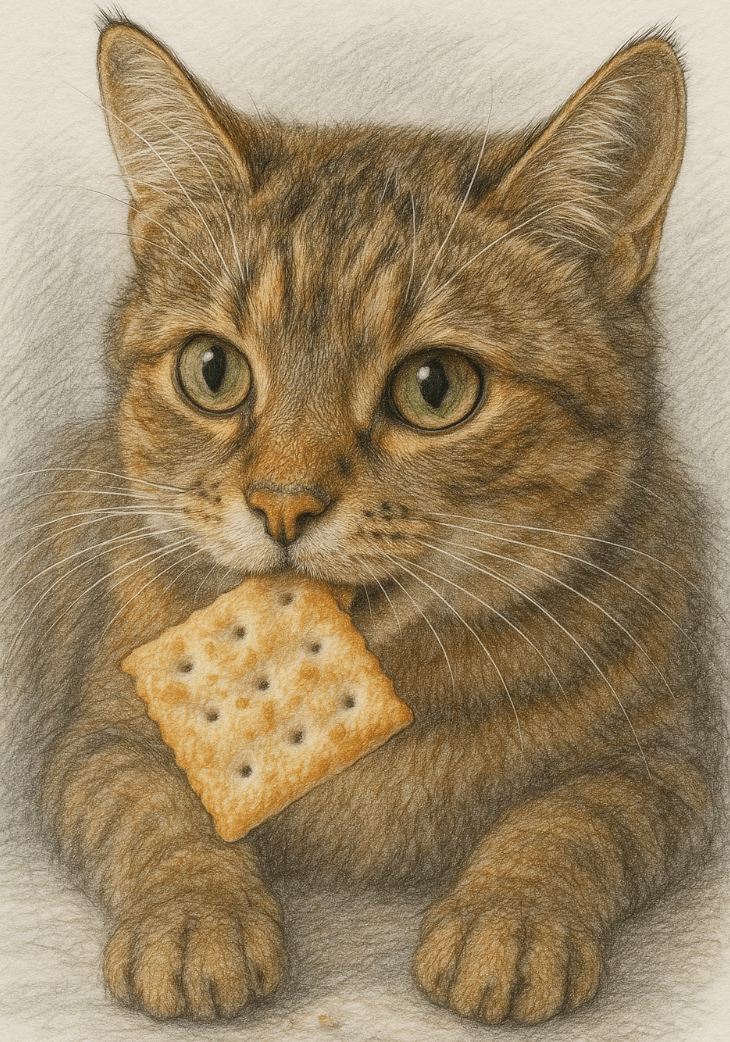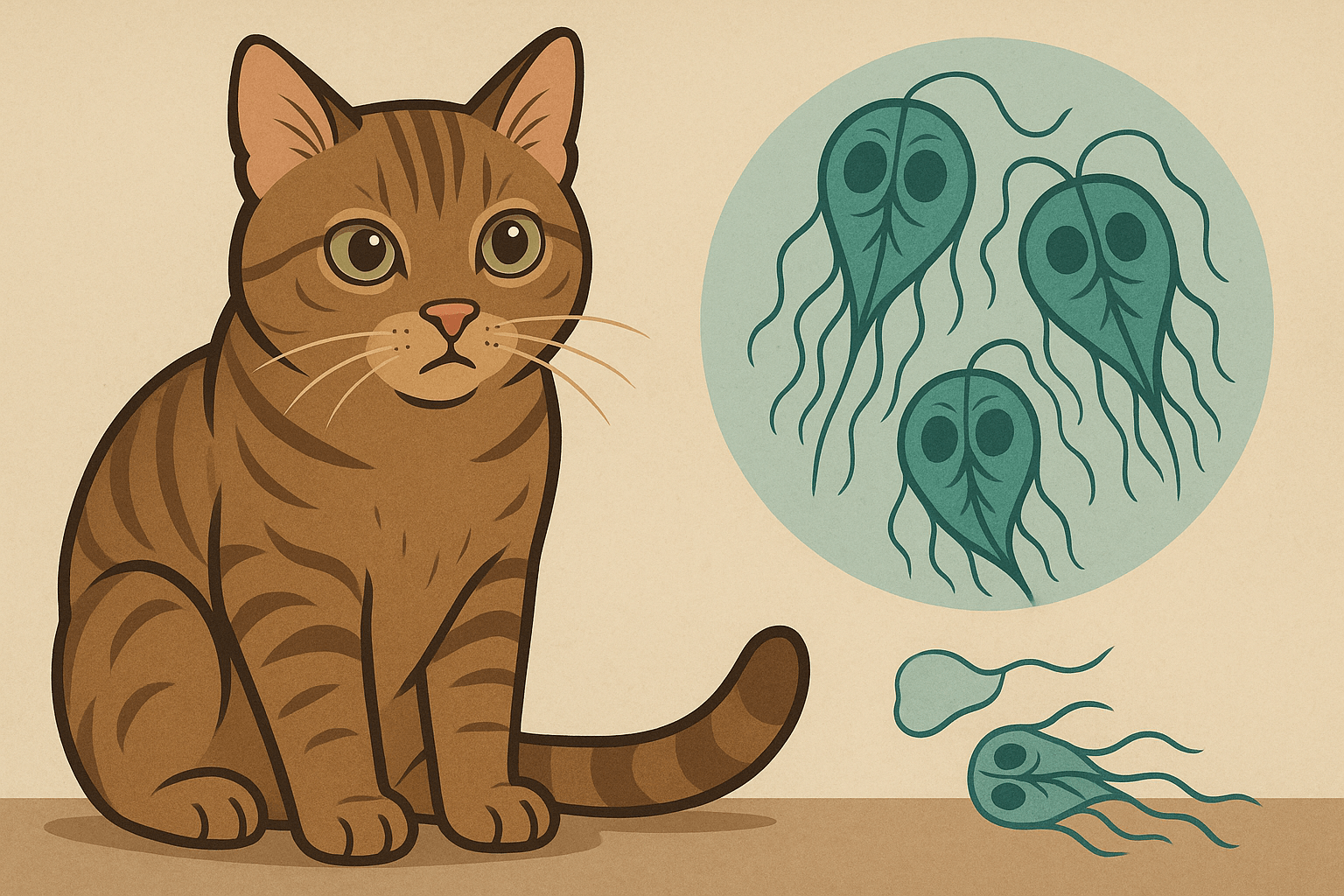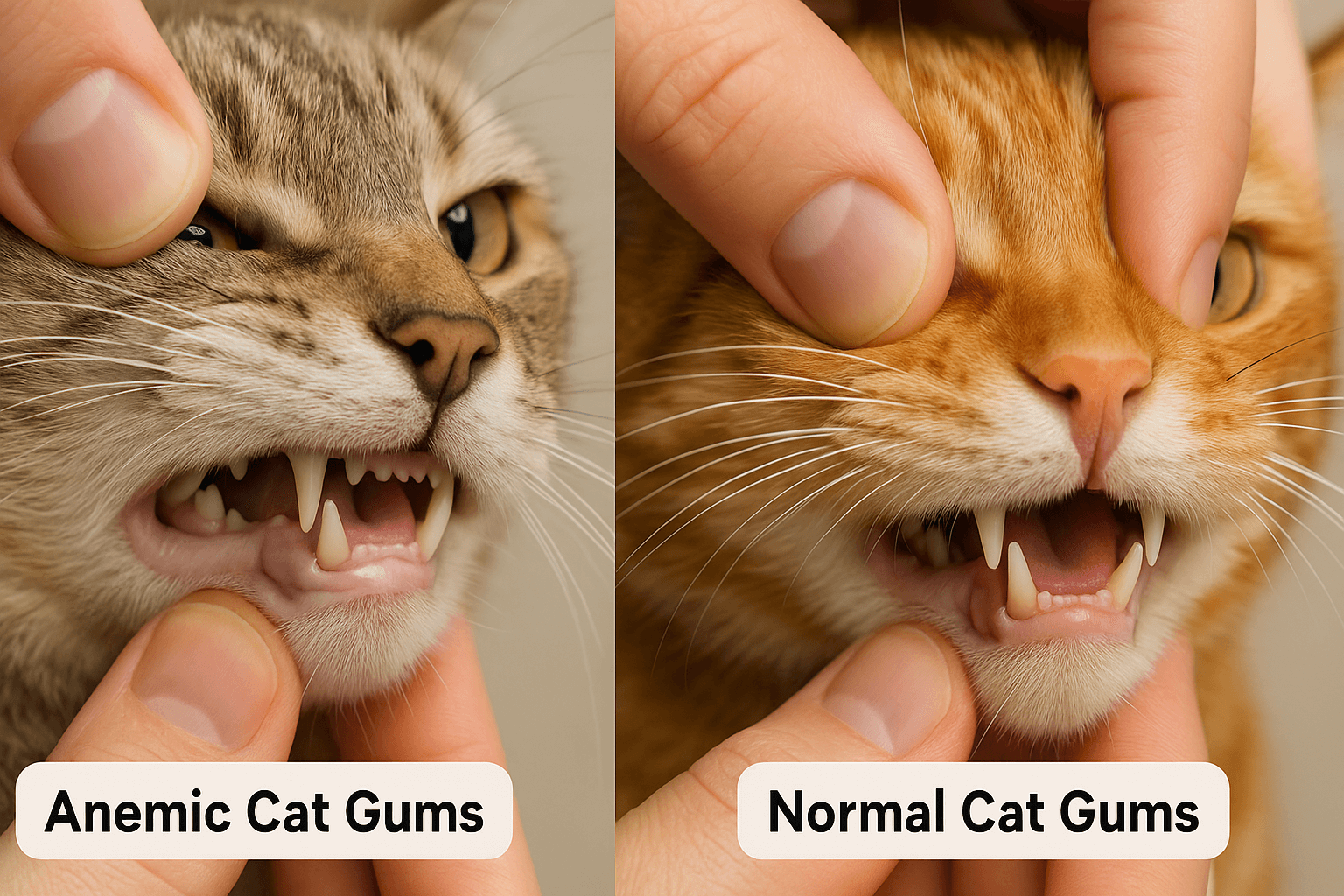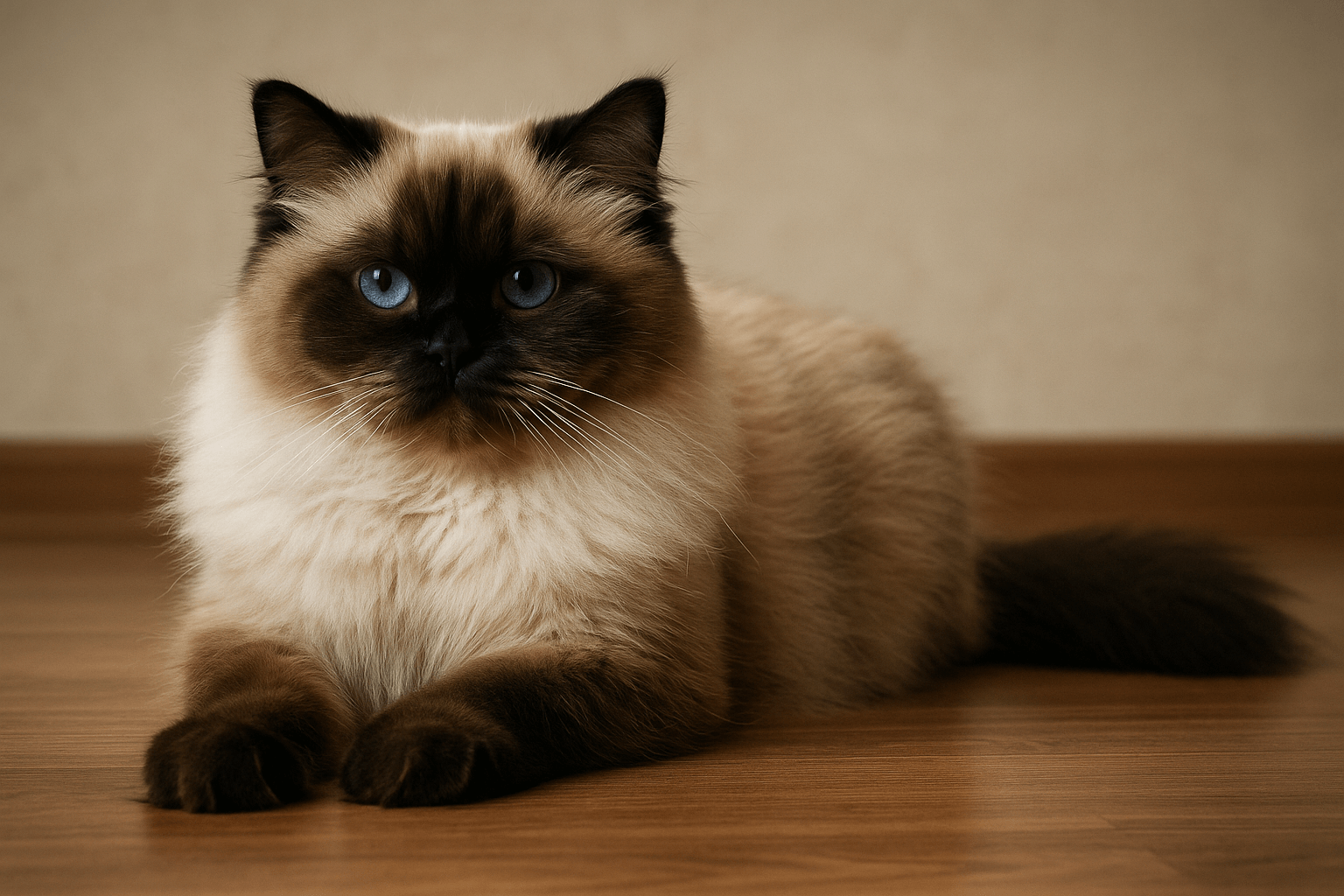Can Cats Eat Crackers?
As cat owners, we often wonder whether human foods are safe to share with our feline companions. Crackers, a common snack in many households, might seem harmless enough—but can cats eat crackers safely? While the occasional nibble of plain crackers isn’t likely to cause immediate harm, certain ingredients and textures can pose risks to your cat’s health. Understanding what makes crackers safe or unsafe for cats is crucial to ensuring their well-being. In this blog post, we’ll explore everything you need to know about feeding crackers to your cat, including potential risks, safer alternatives, and expert advice to keep your furry friend happy and healthy.
Potential Risks of Feeding Crackers to Cats
While crackers may seem like a simple treat, they can pose several risks to cats due to their ingredients and nutritional content. Here’s what you need to watch out for before offering crackers to your feline friend.
High Sodium Content:
Many crackers are loaded with salt, which can lead to dehydration, kidney issues, or sodium poisoning in cats.Artificial Additives:
Flavored or processed crackers often contain artificial flavors, preservatives, and colors that can upset your cat’s stomach.Toxic Ingredients:
Crackers with added ingredients like garlic, onion powder, or cheese can be toxic to cats and should be avoided entirely.Choking Hazard:
The dry and crunchy texture of crackers can pose a choking risk, especially for cats who aren’t used to eating solid human foods.Low Nutritional Value:
Crackers offer no real nutritional benefit for cats and can fill them up without providing essential nutrients.
These risks highlight why crackers should be given sparingly, if at all, and always with caution.
Types of Crackers That Are Safer for Cats
If you decide to let your cat try a small piece of cracker, it’s important to choose the safest options available. Not all crackers are created equal, so here’s what to look for.
Plain, Unsalted Crackers:
Opt for crackers that are free of added salt, sugar, or flavorings to minimize health risks.Whole Grain Varieties:
Whole grain crackers are less processed and may be easier on your cat’s digestive system compared to refined options.Crackers Without Toxic Additives:
Avoid crackers containing garlic, onion, or other harmful ingredients that could poison your cat.Small Portions Only:
Even safe crackers should only be given in tiny amounts, as they don’t align with a cat’s dietary needs.Homemade Options:
Consider making your own plain crackers at home using cat-safe ingredients like flour and water.
Choosing safer alternatives ensures your cat stays healthy while indulging in an occasional treat.
Check this guide 👉Can Cats Eat Parsley? Best 7 Expert Tips!
Check this guide 👉Can Cats Eat Mayo? Best 7 Expert Tips!
Check this guide 👉Can Cats Eat Pancakes? Best 7 Expert Tips!
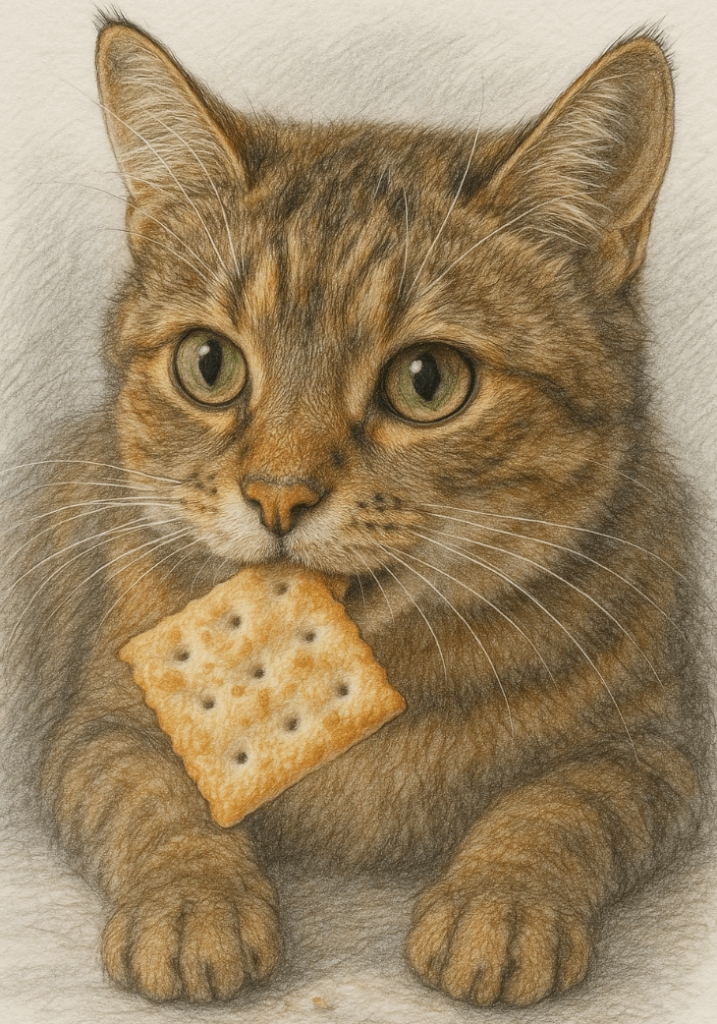
Safe Human Foods for Cats | Foods to Avoid Feeding Cats |
|---|---|
Plain cooked chicken | Crackers with garlic or onion powder |
Boiled carrots (unsalted) | Chocolate or sugary snacks |
Plain rice or oats | Processed chips or salty snacks |
Small pieces of banana | Raw dough or yeast-based products |
Steamed green beans | Alcohol or caffeinated beverages |
Signs Your Cat May Be Sensitive to Crackers
Even if you’ve offered a small amount of a seemingly safe cracker, some cats may still experience adverse reactions. Watch for these signs that indicate sensitivity or intolerance.
Vomiting or Diarrhea:
Digestive upset is a common reaction to unfamiliar or inappropriate foods like crackers.Excessive Thirst or Urination:
High sodium levels in crackers can lead to increased thirst and urination as your cat tries to flush out toxins.Lethargy or Weakness:
If your cat seems unusually tired or unresponsive, it could signal a more serious issue like sodium poisoning.Loss of Appetite:
Refusal to eat after consuming crackers may indicate discomfort or nausea.Swelling or Difficulty Breathing:
These symptoms could suggest an allergic reaction, requiring immediate veterinary attention.
Recognizing these signs early allows you to act quickly and prevent further complications.
How to Introduce New Foods Safely to Your Cat
Introducing new foods, including crackers, requires careful consideration to avoid upsetting your cat’s delicate digestive system. Follow these guidelines to ensure a smooth transition.
Start with Tiny Portions:
Offer just a small bite of any new food to gauge your cat’s reaction before giving more.Monitor for Reactions:
Observe your cat closely for any signs of discomfort, allergies, or digestive issues after trying a new food.Stick to Cat-Friendly Ingredients:
Prioritize foods that align with your cat’s carnivorous diet, avoiding items that are high in carbs or additives.Avoid Overfeeding Treats:
Treats, including crackers, should make up no more than 10% of your cat’s daily caloric intake.Consult Your Veterinarian:
Always check with your vet before introducing unfamiliar foods to ensure they’re safe for your specific cat.
By following these steps, you can minimize risks and keep your cat healthy while exploring new tastes.
Common Mistakes to Avoid When Feeding Crackers to Cats
Feeding crackers to your cat may seem harmless, but certain mistakes can lead to unintended consequences. Here’s what to avoid to keep your cat safe.
Offering Flavored Crackers:
Flavored varieties often contain ingredients like cheese, herbs, or spices that can irritate your cat’s digestive system.Ignoring Portion Control:
Even plain crackers can cause issues if given in large quantities, leading to bloating or nutrient imbalances.Assuming All Crackers Are Safe:
Not all crackers are created equal; some contain hidden toxins like garlic or onion powder that are dangerous for cats.Overlooking Hydration Needs:
High-sodium crackers can dehydrate your cat, so always ensure fresh water is readily available.Neglecting Veterinary Advice:
Skipping a vet consultation can result in unknowingly feeding your cat something harmful.
Avoiding these mistakes ensures your cat stays healthy and avoids unnecessary risks.
Healthier Alternatives to Crackers for Cats
If you’re looking for safe and nutritious treats to spoil your cat, there are plenty of alternatives to crackers that align with their dietary needs.
Cooked Meat Snacks:
Plain, unseasoned chicken or turkey provides protein-rich treats that cats love.Cat Grass:
Available at pet stores, cat grass offers fiber and aids digestion, satisfying your cat’s natural grazing instincts.Freeze-Dried Liver Treats:
These treats are packed with nutrients and mimic the taste of raw meat, appealing to carnivorous cats.Homemade Cat Treats:
Simple recipes using ingredients like tuna, pumpkin, or chicken allow you to control what goes into your cat’s snacks.Commercial Cat Treats:
Specially formulated treats are designed to meet your cat’s nutritional needs while being tasty and safe.
These alternatives provide healthier options that cater to your cat’s natural preferences.
Understanding Your Cat’s Natural Diet and Preferences
Cats are obligate carnivores, meaning their bodies are designed to thrive on a meat-based diet. Understanding their dietary needs helps explain why certain foods, like crackers, aren’t ideal.
High Protein Requirements:
Cats need diets rich in animal protein to support muscle development and overall health.Limited Carbohydrate Tolerance:
Unlike humans, cats have difficulty digesting carbohydrates, making starchy foods like crackers less suitable.Essential Nutrients from Meat:
Taurine, found only in animal-based proteins, is crucial for heart and eye health, highlighting the importance of a meat-focused diet.Natural Curiosity About Food:
Cats may show interest in human foods like crackers, but this doesn’t mean those foods are safe or beneficial for them.Instinctual Hunting Behavior:
Domestic cats retain their wild ancestors’ preference for prey-like foods, favoring meats over plant-based or processed snacks.
By recognizing these traits, you can better tailor your cat’s diet to meet their unique needs.
Frequently Asked Questions About Cats and Crackers
Can cats eat cheese crackers?
No, cheese crackers often contain high levels of sodium and dairy, which can upset your cat’s stomach.
What should I do if my cat ate a large amount of crackers?
Monitor your cat for signs of distress, such as vomiting or lethargy, and contact your vet if symptoms arise.
Are plain crackers safe for cats?
Plain, unsalted crackers are less risky but still lack nutritional value and should only be given sparingly.
Why do cats beg for human food like crackers?
Cats are curious and may associate human food with treats, even if it’s not suitable for them.
What are better snack options for cats?
Cooked chicken, plain rice, or specially formulated cat treats are healthier alternatives to crackers.
Prioritizing Your Cat’s Health When It Comes to Crackers
While the occasional nibble of a plain cracker isn’t likely to harm your cat, it’s clear that crackers are not an ideal treat for felines. Their high sodium content, artificial additives, and low nutritional value make them a poor choice compared to cat-safe snacks. By understanding the risks and opting for healthier alternatives, you can ensure your cat stays happy, healthy, and well-nourished. Remember, your cat relies on you to make the best dietary choices for them—so always prioritize their well-being over convenience or curiosity.
Giardia in Cats: Best 7 Expert Tips! Discover expert advice on identifying, treating, and preventing giardia in cats to ensure your feline stays happy and healthy.
Cat Hyperventilating: Best 7 Expert Tips! Discover signs, causes, and solutions for cat hyperventilation. Learn how to calm your cat and when to seek veterinary care for their breathing issues.
Anemic Cat Gums vs Normal: Best 7 Expert Tips! Learn to spot signs of anemia in cats, understand gum health, and ensure your feline stays happy and healthy with expert advice.
Himalayan Cat Size: Best 7 Expert Tips! Discover expert advice on Himalayan cat size, growth factors, care tips, and how to ensure your feline stays healthy and happy.

